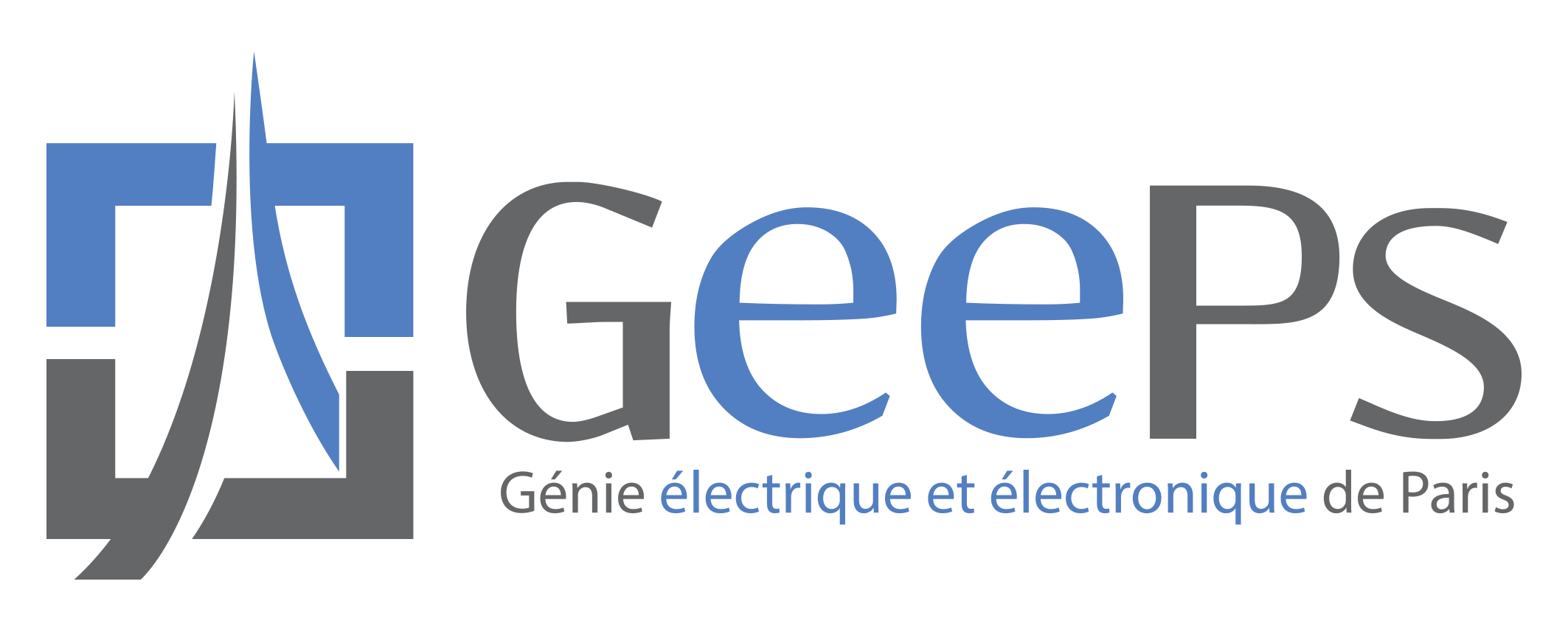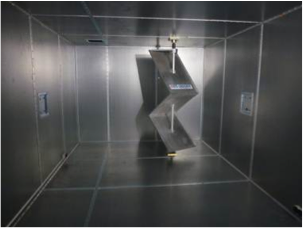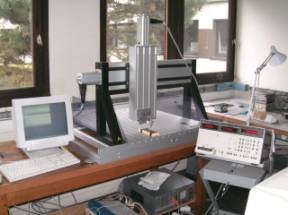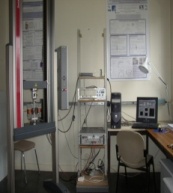Projects
On-going projects
GENIUS (Glide-symmetric metamaterials for innovative radio-frequency communication and sensing)
funded by Europe under the programme Marie Sklodowska Curie Action (MSCA) Doctoral Network ”Industrial Network"
Glide-symmetric artificial materials, also known as metamaterials, feature a special symmetry inside their constitutive unit cells that gives them unique electromagnetic properties. The EU-funded GENIUS project will examine such metamaterials for use in radio-frequency systems with applications in aerospace communications and automotive sensing. Such materials allow propagation in an ultra-large bandwidth and contain strong isolation and high absorption features, which can be used in modern radio-frequency systems. The project will train doctoral researchers on the physical properties of complex electromagnetic systems and designing devices using various modelling methods. GENIUS will be the only international training programme bringing together metamaterial physics and application-oriented radio-frequency design.
BeSensiCom (Seamless BEamspace SENSIng for mm-wave COMmunications with high mobility)
funded by French National Research Agency (ANR) under the programme PRC (ANR-22-CE25-0002)
The next decade is going to witness a profound transformation in the mobile communication infrastructure. The aim of interconnecting everything everywhere unleashes new visions such as autonomous vehicles, factory of the future, and augmented reality. To meet the requirement associated with these new use cases, one key technology is the millimeter-wave (mm-wave) spectrum. However, operating at such high frequencies remains challenging, especially in mobile scenarios. Indeed, mm-wave operation includes a beam training process to align the directional beams radiated by the antennas at the base station and the user equipment. This procedure introduces large overhead signaling as well as latency, especially during initial access, which could jeopardize mm-wave effectiveness. So far, beam training relies on the sequential scanning of the beam space, which represents a bottleneck for efficient mobile mm-wave communications. To address the latency and overhead issues in this beam management, BeSensiCom conducts a radically different approach by envisioning a sensing unit that feedbacks the angular spectrum to the base station in real time. To achieve such a technological breakthrough, BeSensiCom leverages the intrinsic frequency beam scanning behavior of multibeam leaky-wave antennas to perform angle-of-arrival estimation using dedicated algorithms. BeSensiCom goes beyond the state-of-the-art by conducting a transdisciplinary approach combining applied electromagnetics and signal processing. With BeSensiCom’s vision, the cognitive approach of frequency spectrum sensing is extended to the angular spectrum to enable managing the beam space not as a separate resource, but as an extra dimension in the resource grid. This brings the unique opportunity to represent channel resources, not as a 2D grid, but as a time-frequency-beam 3D grid.
MOCACCINO: (Modelisation et Optimisation efficace pour la Conception d'Antennes a fente multiCouches, Compactes et INnOvantes)
funded by French National Research Agency (ANR) under the programme ANR ASTRID Maturation
Le projet MOCACCINO s’inscrit dans un contexte économique et sociétal caractérisé par l’accroissement significatif des besoins en communication. On observe en particulier le déploiement rapide de nouvelles infrastructures, la densification et la montée en performance de réseaux existants.
Toutes ces évolutions visent à accroître la connectivité et les vitesses de transfert d’information entre utilisateurs, bénéficiant ainsi à de nombreux secteurs d’activité économiques (santé, mobilité, industrie, sécurité etc.). Cette montée en puissance et en nombre de dispositifs communicants nécessite un usage optimal de l’espace physique disponible et du spectre fréquentiel. Pour cela, il est important de disposer de dispositifs antennaires planaires, à haut rendement, large bande et directifs. Ceux-ci permettent d’assurer des communications énergétiquement efficaces et des débits importants. Les systèmes actuels et futurs de communication SATCOM sont un exemple notable de cohabitation de ces différentes contraintes. On peut également citer les développements en cours pour les systèmes de communication terrestres 5G+ et 6G.
Les développements numériques proposés dans le projet MOCACCINO visent à répondre aux besoins d’outils efficaces pour la conception et l’optimisation d’antennes complexes à très faible encombrement, haute performance radioélectrique et haut rendement énergétique.
Le projet propose de poursuivre la montée en maturité d’outils de conception et d’optimisation développés dans le projet Fast-HEM-3DSIW (ANR-16-ASTR-0001) dépassant les limitations des logiciels commerciaux “general purpose”. Ces outils permettront l‘analyse efficace et rapide de systèmes planaires à très forte complexité afin de mieux répondre aux besoins applicatifs. L’obtention d’un haut niveau de performance repose sur l’optimisation fine des nombreux degrés de liberté géométriques offerts par les structures multicouches en technologie circuit imprimé, par le choix judicieux des matériaux employés et par la capacité à prendre en compte certains aspects du champ proche de l’antenne tels que la présence de superstrats (radôme, lentille, surface sélective en fréquence ou métasurface).
En parallèle, il propose également de poursuivre le développement du concept des réseaux d'alimentation parallèle en technologie circuit imprimé sur plusieurs niveaux introduit dans l’ASTRID initial afin d’améliorer significativement la stabilité du gain en fréquence des antennes à réseau de fentes.
Enfin, l’outil de conception développé permettra également de faciliter la conception et l’optimisation d’autres dispositifs hyperfréquences (circuits d’alimentation, filtres, coupleurs, etc.).
Dispersive Analyses of GLIdE-symmetric all-metal structures (DAGLIE)
funded by the Air Force Research Lab
The research activities proposed aim at studying, for the first time, the dispersive features of all-metal open G-S waveguides, which are then exploited to design planar all-metal leaky-wave antennas (LWAs). These classes of well-known devices, generally compact and low cost, can offer both wideband broadside radiation (in the order of 12-15 %, and possibly beyond), or high-gain beams scanning with frequency. These features can be of interest for several applications (satellite and terrestrial communications, sensing, imaging, etc.), whilst the presence of all-metal structures is extremely desirable for devices working at frequencies beyond 60-80 GHz, and for space or aeronautics applications. We propose the study of an ad-hoc, accurate and efficient, numerical tool for the analysis of open G-S structures, which is then exploited to explore their dispersive features, as well as to design and simulate the first all-metal G-S LWAs.
Impact of electromagnetic waves on the development of a sensory organ in Drosophila
funded by the French Agency for Food, Environmental and Occupational Health & Safety (ANSES)
This project aims at testing whether 5G electromagnetic waves induce developmental defects and genomic instability in the model insect Drosophila melanogaster and whether this occurs via a modulation of c-het. We will submit Drosophila embryos and pupae, two stages that correspond to crucial events of development, i.e. embryogenesis and metamorphosis, to 5G electromagnetic waves (28GHz). The strength and the novelty of our project lie in the fact that we will analyse the potential impact of this developmental exposure not only on macroscopic phenotypes of adults but also at the cellular level by visualizing DNA damage and c-het spatial organization. Indeed, many mechanisms can buffer environmental aggressions enabling an almost correct development. Thus, by analysing the development or behaviour of flies in a global way, subtle effects detectable only through live imaging of genomic instability and heterochromatin dynamics could be missed. Whole embryos will be exposed to 5G electromagnetic waves and imaged during the whole embryogenesis.
Recent completed projects
[2022] EMERALD (ElectroMagnetic imaging for a novel generation of medical Devices)
funded by Europe under the programme Marie Sklodowska Curie Action (MSCA) Innovative Training Network (ITN)
Medical imaging technologies play a key role to face the ever-growing number of challenges due to aging populations, as they are the essential clinical tool to deliver accurate initial diagnosis and monitor the evolution of disease over time. For this reason, a whole range of new imaging modalities is currently being developed to supplement and support current modalities. Among these technologies, there is EM imaging, which involves the illumination of the portion of the body under investigation with low-power non-ionizing EM waves (in the microwave spectrum) and the use of the resultant backscattered signals to generate images of the internal structures of the body. The scientific objective pursued by the EMERALD action is to accelerate translation of research in EM medical imaging into clinical prototypes. To this end, EMERALD has established a group of 13 early-stage researchers capable of driving the future developments of EM imaging technology, thanks to the targeted skills they have attained and the connections they established among them and with clinicians and stakeholders. The EMERALD consortium involved academic institutions, industrial partners, hospitals, and university medical centers.
[2022] GEOHYPE (GEOcasting for HYPEr resolution spatial data focusing)
funded by French National Research Agency (ANR) under the programme JCJC (ANR-16-CE25-0003)
GEOHYPE investigates physical solutions that enable the broadcasting of information to specific spatial locations, using limited infrastructures. From a scientific point of view, the problem is to find a way for a base station to wirelessly transmit data that are decodable only within desired areas. To overcome limitations of classical beamforming methods that necessitate large and complex antenna arrays, GEOHYPE proposes an original approach named Spatial Data Focusing. Instead of focusing the radiated power of a transmitter toward a particular direction, GEOHYPE aims to focus the data only. In other words, transmitted data are present everywhere but decodable only at the desired location.
[2022] NOVIS60 (Non-contact vital sign estimation with 60 GHz radar technology
funded by the Indo-French research center CEFIPRA
NOVIS60 aims to develop an innovative electronic system capable of detecting people’s vital signs (namely, respiration and heartbeat rate) in a remote and contactless way. Multiple needs in today’s society motivate such a device and the fact that NOVIS60 does not require the person to be monitored to wear sensors opens new perspectives. Hospitals could benefit from a continuous and seamless monitoring solution that would lead to more comfort for the patient while offering a cost-effective solution since there would be no need to replace the sensors between each patient (non-contact approach). Monitoring respiration and heartbeat rate can also enable detecting emergency situations such as stress or falling asleep for airplane’s pilot or bus’s driver for instance.
NOVIS60’s solution will be based on a Doppler radar operating in the license-free 60 GHz band. A radio-frequency wave will selectively illuminate a person, whose vital signatures will be responsible for micro-movements of the body. These movements will affect in turn the reflected wave, which will be received and processed by the sansesystem in order to extract vital signs information. Due to the directive illumination of the system, it will be possible to monitor several people simultaneously, and to recognize possible situations of stress/danger. A first proof of concept has been obtained within the consortium and NOVIS60 aims to develop a demonstrator to assess such a radar in real situations. This demonstrator will include a novel beam-scanning antenna and its dedicated 60 GHz transceiver and will enable drawing the fundamental limitations of this approach while better highlighting its potential.
[2021] Modeling and design of holey metasurfaces (HOLeYMETA)
funded by French National Research Agency (ANR) under the programme JCJC (ANR-16-CE24-0030)
“Holey Metasurfaces” are a new typology of metasurface lenses. We propose here the first detailed study of hollow metasurfaces with the aim of developing a new analytical/numerical method for their modeling and characterizing their performance, to then proceed to the design of prototypes dedicated to several applications, such as wideband lenses for directive radiation in satcom and 5G communications.
[2021] AC3M (Antennes Compactes Multibandes à MétaMatériau)
funded by Directorate General of Armament under the programme Rapid DGA
Maritime detection of illegal vessels on the high seas in the French EEZ by a trans-horizon radar operating in HF band.
Since the Montego Bay Convention of December 10, 1982, each country with maritime coasts has the duty to monitor the sea area that has been allocated to it, this area is called EEZ for Exclusive Economic Zone. France is one of the countries with the largest surface area of coastline, and its EEZ extends up to 370 km from them. In this context, the objective of the ANR SimROS project was to develop a software demonstrator capable of calculating the detection ability of a ship located on the high seas thanks to a radar operating with surface waves in HF band. One of the objectives is to be able to dimension the radar system so as to monitor the entire affected area. Another goal is to be able to determine the sensitivity of the radar according to the signature of various types of ships.
Modular demonstrator for the rapid calculation of characteristic radar images of ships moving on the high seas.
The objective is to be able to quickly determine the link budget between a transmitter and an antenna array in reception mode via ships located on the high seas. These calculations must take into account the clutter associated with waves moving over time and the fact that the transmitting antennas radiate a non-zero signal towards the ionosphere. This signal also acts as an additive noise at the receivers. In order to meet this objective, it is first necessary to simulate the entire radar chain (antennas, propagation, scattering of targets). For each element, we have selected the fastest approaches to solve the problems. On the other hand, some elements require calculations by codes based on rigorous formulation (scattering of ships, radiation of antenna systems). For these and in order to not penalize the calculation, databases have been set up and can be fed according to the needs.
Major results
The developed software has allowed to integrate the Aromes maps of Météofrance and to recover the expected results:
- Bragg lines related to the noise generated by the displacement of the waves (sea clutter),
- Position and speed of ships initially set in the calculation code.
It has made it possible to take into account the various noises that can interfere with the detection of ships (sea clutter, ionospheric noise) and to quantify the detectability of these according to their RCS, their distance from the source, the power emitted by the radar and the sensitivity of the receiver. These quantities are necessary to help in the dimensioning of a Doppler radar system.
[2021] SimROS (Simulateur de Radar à Ondes de Surface)
funded by French National Research Agency (ANR) under the programme ANR ASTRID Maturation
Depuis la convention de Montego Bay du 10 décembre 1982, chaque État possédant des côtes maritimes a le devoir de surveiller la zone de mer qui lui a été attribuée. Cette zone est appelée ZEE pour Zone Economique Exclusive. La France est un des pays qui possède la plus grande superficie de côtes, la ZEE s’étendant jusqu’à 370 km de celles-ci. Dans ce contexte, l’ANR SimROS avait pour objectif le développement d’un démonstrateur logiciel capable de calculer le pouvoir de détection d’un navire situé en haute mer par un radar fonctionnant par ondes de surface en bande HF. Un des objectifs, d’une part, est de pouvoir dimensionner le système radar de manière à surveiller toute la zone affectée. D’autre part, il s’agit de pouvoir déterminer la sensibilité du radar suivant la signature des différents types de navires.
[2020] MIBRASCAN (Microwave Brain Scanner for Cerebrovascular Diseases Monitoring)
funded by Italian National Research Agency under the programme PRIN
The main goal of MIBRASCAN is to develop and build the prototype of a microwave imaging device able to track the evolution in time of a stroke, as well as to image the features of the tissues it has affected. Stroke is one of the most common diseases worldwide, with over 15 million cases every year causing death or permanent injuries. Its treatment significantly relies on the information provided by diagnostic methodologies, as they support the clinician in the choice of the therapy and in following its effectiveness. The most established diagnostic tools are magnetic resonance imaging and computerized tomography (CT), which indeed provide highly reliable diagnostic images. However, these techniques are time consuming, not portable and costly and, in the case of CT, harmful due to ionizing radiation. For these reasons, there is an interest in developing complementary techniques, such as those based on microwave imaging. The underlying technology exploits the difference in dielectric properties of tissues to provide a diagnostic image.
MIBRASCAN led to the development of a full-scale microwave imaging prototype (hardware and data processing) portable and cost-effective and its full characterization and assessment by means of accurate numerical simulations and extensive experiments with 3D anthropomorphic head phantoms developed by the GeePs/L2S laboratories. Preliminary experiments involving a 3D phantom filled with brain tissue-mimicking liquid confirmed the potential of the technology in imaging a spherical target mimicking a stroke of a radius equal to 1.25 cm.






